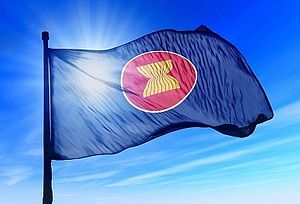Southeast Asian leaders signed a declaration to formally establish an ASEAN community at a summit Sunday in Kuala Lumpur in a milestone for regional integration.
The ten members of the Association of Southeast Asian Nations (ASEAN) inked the 2015 Kuala Lumpur Declaration on the Establishment of the ASEAN Community which will see a community formed on 31 December 2015.
The move is a landmark development for ASEAN, which was originally formed in 1967 with just five members. It is a step towards realizing the idea of a three-pillared community to deepen regional integration first proposed in 2003 comprising an ASEAN Political and Security Community; an ASEAN Economic Community; and an ASEAN Socio-Cultural Community.
“It is a day that we have all been waiting for. It is a day that we – ASEAN – can be proud of,” Malaysian prime minister Najib Razak said in his opening address to the 27th ASEAN Summit which Malaysia led as this year’s holder of the rotating ASEAN chair.
In the lead-up to the move, skeptics had repeatedly pointing out that much work remains unfinished in spite of the declaration of a new community, a point not lost on the region (See: “Will ASEAN Forge An Economic Community By 2015? Wrong Question“) . Even within the ASEAN Economic Community (AEC), the most well-known pillar, the region is still far from creating a truly single market and production base with a free movement of goods and services. As of October 31, ASEAN had only completed 79.5 percent of a full AEC scorecard of over 600 measures.
Acknowledging this reality, member states also inked the Kuala Lumpur Declaration on ASEAN 2025 charting the way forward for the community for the next ten years. Malaysian prime minister Najib Razak, who hosted the summit, noted that the ASEAN Community was a marker rather than the end of the region-building process, and that leaders had set the 2025 target to give them the necessary time and space for even deeper integration.
“[T]he coming into being of the ASEAN Community does not mean that we have arrived at the end of the region-building process,” Najib said. “Now the hard work of fully uniting and integrating under the three pillars of the Community has to be redoubled”.
In addition to the ASEAN Community, the 27th ASEAN Summit also saw the adoption of a range of other measures, including a convention against trafficking, a joint statement on climate change, declarations on aging and higher education and regional plans of action on eliminating violence against women and children. This is in line with Malaysia’s theme of a people-centered ASEAN with the logo: “Our People, Our Community, Our Vision.” (See: “Malaysia As ASEAN Chair: What to Expect“).
At the end of the meeting, Najib handed over the rotating chairmanship of ASEAN to his Laotian counterpart Thongsing Thammavong. Laos will chair the regional grouping from January 1.
As usual, the ASEAN Summit also saw several other related summits occur between ASEAN and its external partners which also produced some notable outcomes. For instance, at the U.S.-ASEAN Summit, as I had reported earlier, the two sides upgraded their relationship to the level of a strategic partnership (See: “US, ASEAN To Ink New Strategic Partnership“).































